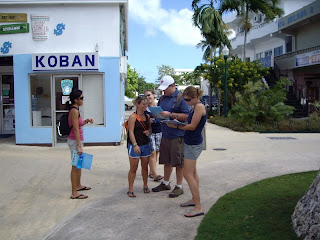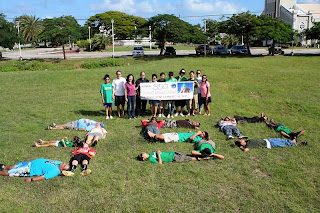The teacher workshop based on the “Ridge to Reef” theme looked at the connections between land and sea, and explored ways in which teachers can share that knowledge with students. Land-based pollution is one of the greatest threats to coral reefs today.
Together with field experts, the teachers toured Kagman Wetland Education Island, Garapan Watershed and Tank Beach – part of the Forbidden Island Marine Sanctuary. The camp was held Saturday, Nov. 21.
Teachers took home activity folders, which will help them develop lesson plans. As a follow-up to the camp, upon completion of three “Ridge to Reef”-related lesson plans, teachers and their classes will embark on educational field trips funded by Mariana Islands Nature Alliance (MINA).
The camp is a combined effort of MINA, Coastal Resources Management Office, the Division of Fish and Wildlife, the Division of Environmental Quality and the CNMI Coral Reef Initiative.
The following is a list of camp presenters and topics:
Brooke Nevitt, Coastal Resources Management, Ridge to Reef: Making the Connections
Lisa Eller, Division of Environmental Quality, Watersheds
Laura Williams, Division of Fish and Wildlife, Wetlands
Kathy Yuknavage, Mariana Islands Nature Alliance, Marine Debris
To learn more about upcoming Teacher Camps, contact Brooke Nevitt, CRM Education and Outreach Coordinator at 664-8300.

Participants assessing their experience at Teacher Camp.

Educators exploring Tank Beach in Forbidden Island Marine Sanctuary.





